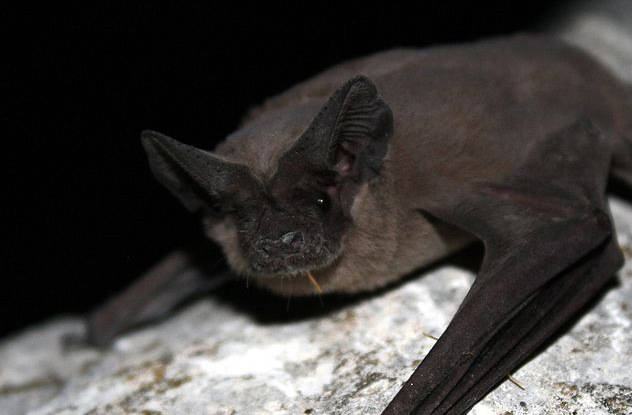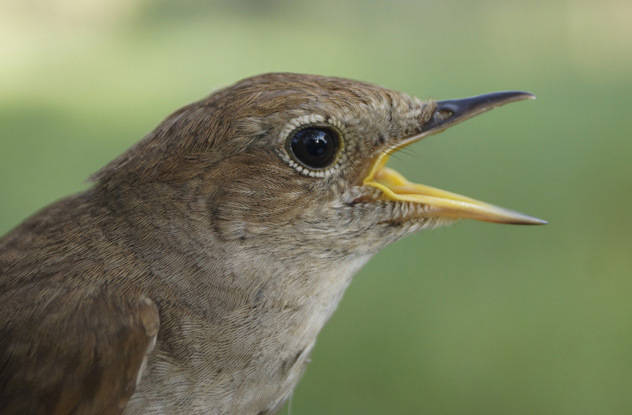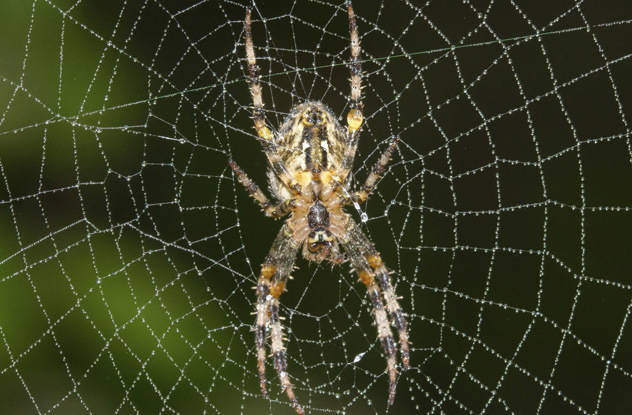People probably assume that they have nothing in common with today’s wild animals. After all, we clothe ourselves, produce musical masterpieces, and send people into space.
But what if you were to learn we have far more similarities with our wild brethren than meets the eye? Animals, in fact, do many of the same things we do, from fawning over rock stars, to chatting about their kids. We’re not so different from our wild friends.
1. Whales can have best hit playlists.
 share
share
Male humpback whales in the South Pacific have mating songs that usually spread from west to east over a period of one mating season. They do this by a few whales joining a new group, and spreading the most popular song. And just like humans, they innovate quickly and move onto the next big thing, with only two or three months between best hits.
2. Animals have regional accents.
 share
share
Similar to the differences between a Southern accent, and a Boston one, crested gibbons (related to the apes we’re familiar with) roam the jungles of Cambodia, China, Laos, and Vietnam. By singing long-distance duets to seduce their mates and map out their territories, researchers have found that “[e]ach gibbon has its own variable song. But, much like people, there is a regional similarity between gibbons within the same location,” says evolutionary biologist Van Ngoc Thinh.
3. Bats sing the best love songs.
 share
share
Because they don’t rely on sight, and have only one-tenth of a second to draw the attention of females, it’s often the bat with the most romantic song that gets the ladies. Even when he does get her though, he has to keep his material fresh and constantly make up new songs until mating is finished in order to keep her from becoming bored and leaving.
4. Female sparrows love rock stars.
 share
share
In the sparrow world, the older the sparrow, the slower pace and higher pitch a song becomes. Which makes them rock stars, and the envy of all the lady sparrows. However, after becoming pregnant, these females often “settle” with their younger counterparts who are more able to take care of them for the long term.
5. Turtles chat about their kids.
 share
share
Using unique noises to keep track of their offspring, and even talk with their kids in their eggs (the kids even talk back!), the female Giant South American River Turtles alternate between low and high frequency tones. Although scientists don’t yet know the reasoning for the different tones, they’re still fascinated by the communication between mother and child.
6. Moths do dirty talk.
 share
share
Moths originally evolved a set of ears in order to hear bats approaching. But over time, they developed several sneaky features. One is to actually create the sound of an approaching bat in order to have a female moth freeze. Another is for species of moths to communicate their sexual desires to each other in an ultrasonic (quiet) fashion.
7. Nightingales get more attractive with age.
 share
share
Similar to the older male sparrows, male nightingales are more sought after with age. The difference though is that the nightingales are MUCH better singers than the sparrows. With the difference growing exponentially the older they get. It’s this difference that makes female nightingales far pickier when it comes to the males they mate with, and why they’re far more likely to stick with the older ones they meet.
8. Songbirds insult and even curse each other.
 share
share
Do you think it’s cute when birds sing? Think again. “Song-sharing, where birds sing a smaller number of their species’s greatest hits, is a more aggressive and attention-seeking behavior,” according to researcher Janet Lapierre from the University of Western Ontario. “It’s also a behavior most often displayed by belligerent older males.” Additionally, when one sparrow gets into another’s territory, copying of the song to display dominance can be shown, along with “cursing out” the offender by violently flapping a wing or two at them.
9. Spiders make music on the web.
 share
share
Using its web as an information source, spiders rely on the vibrations to determine information about a mate, prey, or even the strength and flexibility of its web. According to Beth Mortimer from Oxford University, “Most spiders have poor eyesight and rely almost exclusively on the vibration of the silk in their web for sensory information. The sound of silk can tell them what type of meal is entangled in their net and about the intentions and quality of a prospective mate.”
10.) Young female mice are attracted to musical talent.
Female Alston singing mice, like some of the other bird species above, prefer more difficult, flashier songs from their mates.
It’s believed that female mice use the male’s singing ability to determine his suitability as a mate. “What makes a great performance is how rapidly males can repeat notes while maintaining a large range of frequencies of each note,” says researcher Bret Pasch. “Female preference seems to be based on how well males perform songs.”
(via Listverse)
All of these 10 things sound exactly like what we do on a daily basis. We pine over rock stars, bicker with family, and brag about our kids with the best of them. So it’s no wonder than our relatives in the animal kingdom not only do the same, but maybe even take a little more stock in them. Which begs the question: do you really still think we’re so different?
 share
share
 share
share
 share
share
 share
share
 share
share
 share
share
 share
share
 share
share
 share
share



